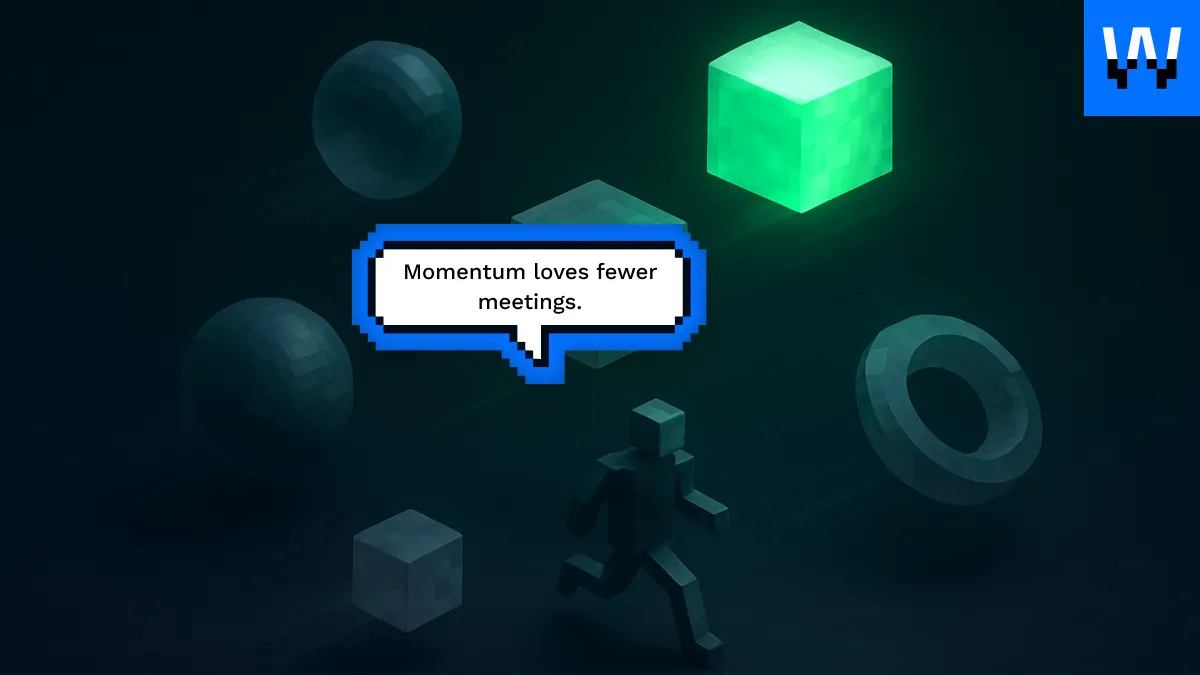How Can You Build a Lean Development Team That Still Delivers Fast?
Introduction
More code doesn’t mean more progress. In 2025, the smartest product teams are moving away from bloated engineering departments toward lean squads — compact, high-performing, and built to move.
But how do you build a small dev team that still ships at the speed of your ambitions?
The answer isn’t in headcount — it’s in structure, mindset, and the systems you use. At Wild.Codes, we’ve helped 100+ companies scale lean teams that deliver more with less. Here’s what we’ve learned.

Why Lean Doesn’t Mean Weak
Big teams often look impressive on org charts, but they come with baggage:
- Communication overhead
- Slower decision cycles
- Higher fixed costs
- More coordination, less creation
Lean teams, on the other hand, are built to:
- Focus on outcomes, not optics
- Move fast and adapt quickly
- Deliver end-to-end with autonomy
Key insight: It’s not about doing more with fewer people. It’s about doing the right work — with the right team.
The Core Ingredients of a High-Output Lean Team
Based on dozens of real-world deployments, we’ve identified what makes a compact team outperform:
1. Full-Stack Mindset
Dev team members who understand both frontend and backend systems — and the product context they serve.
2. Product + Engineering Integration
No handoffs. Engineers should be in product conversations early, helping shape scope, not just implement features.
3. Culture of Ownership
Each person owns outcomes, not tasks. They care about velocity, quality, and impact.
The Most Common Mistakes When Trying to Go Lean
Many founders try to shrink their dev teams — but cut the wrong things. Here’s what often goes wrong:
❌ Removing mid-levels while keeping only juniors and seniors
This breaks mentorship loops and slows decision-making.
❌ Hiring “rockstars” who don’t collaborate
One brilliant dev who can’t work with product, design, or QA will stall everything.
❌ Over-optimizing for cost
Lean doesn’t mean cheap. Underpaying leads to churn, hidden costs, and morale issues.
❌ Outsourcing critical thinking
Some teams offload too much to freelance devs who aren’t aligned with business goals.
Wild.Codes tip: A lean team is built with contributors who think like founders, not ticket-takers.

How Wild.Codes Helps Teams Stay Lean — and Fast
We specialize in building compact product squads that:
- Start shipping in days, not weeks
- Scale up or down flexibly
- Come pre-vetted for collaboration, ownership, and product thinking
We don’t drop freelancers into your project. We embed builders into your workflow.
Average result: Teams reduce burn by 30–40%, while maintaining — or increasing — release velocity.
The Wild.Codes Model for Lean, High-Velocity Teams
We use a proven framework to help you build the smallest team capable of big outcomes:
Step 1: Start with Outcomes
What features, goals, or metrics do you need to hit in the next 60–90 days?
Step 2: Map Capabilities — Not Titles
We build teams based on:
- Product lifecycle stage
- Tech stack
- Delivery speed needs
- Team rituals & culture
Step 3: Deliver and Iterate
We staff developers who are:
- Full-stack capable
- Async-first communicators
- Agile and startup-proven

Lean Doesn’t Mean Light on Impact
One of our clients replaced a 9-person dev team with a 4-person squad via Wild.Codes. Here’s what happened:
- Feature delivery improved by 25%
- Bugs dropped by 60%
- Product/engineering friction disappeared
It wasn’t magic. It was a better team fit.
Bottom line: With the right systems and people, fewer devs = faster outcomes.
Tactics to Keep a Lean Team Moving Fast
Once your lean team is in place, here’s how to keep it fast and focused:
1. Define Clear Weekly Outcomes
Avoid “just ship something.” Align everyone on sprint goals tied to real product metrics.
2. Run Async by Default
Use Loom, Notion, and Git-based workflows to reduce meetings and create clarity.
3. Empower Engineers to Push Back
Great engineers flag scope creep, misalignment, and blockers. Encourage it.
4. Pair Devs with Product — Not Just Tickets
Involve devs in prioritization and user feedback loops. They’ll ship better solutions, faster.
Common Questions from Founders
“How do I know if I’ve gone too lean?” If velocity drops, bugs rise, or team morale dips — you may have overcut.
“Can lean teams handle scale?” Yes — if you build with scale in mind and plug in extra capacity on-demand (like through Wild.Codes).
“What if someone leaves?” Our clients have backup talent ready to swap in within 48 hours — no delivery delays.
Final Thoughts
Building a lean dev team isn’t about cost-cutting — it’s about focus. You want fewer people, aligned tightly with product goals, delivering value fast.
When you get it right, you get:
- Faster sprints
- Cleaner releases
- Lower burn
- Higher morale
That’s what we build at Wild.Codes: compact squads with startup energy and enterprise-grade output.
Let us help you do more — with less.
• PHP expertise;
• Database management skills;
•Jungling traits, methods, objects, and classes;
• Agile & Waterfall understanding and use;
• Soft skills (a good team player, high-level communication, excellent problem-solving background, and many more)
• OOP & MVS deep understanding;
• Knowledge of the mechanism of how to manage project frameworks;
• Understanding of the business logic the project meets;
• Cloud computing & APIs expertise.
• Reasonable life-work balance;
• The opportunity to implement the server-side logic via Laravel algorithms;
• Hassle-free interaction with back-end and front-end devs;
• Strong debugging profile.
• Using HTML, XHTML, SGML, and similar markup languages
• Improving the usability of the digital product
• Prototyping & collaboration with back-end JS experts
• Delivery of high-standard graphics and graphic-related solutions
• Using JS frameworks (AngularJS, VueJS, ReactJS, etc
• Clean coding delivery and timely debugging & troubleshooting solution delivery
• UI testing and collaboration with front-end JS teammates
• Database experience
• Building APIs while using REST or similar tech solutions
• Collaboration with project managers and other devs
• Delivery of design architecture solutions
• Creation of designs & databases
• Implementation of data protection and web cybersecurity strategies.
• Both front-end and back-end qualifications










